STEP EIGHT
BUILDING PERSPECTIVE
WITH BRICKS

BUILDING PERSPECTIVE

Place a brick on the table before you. Sketch the brick with its parallels extended to their vanishing points.
Place a second brick on the first. This second brick adds more parallel lines which in turn can be extended to the two vanishing points of brick number one.
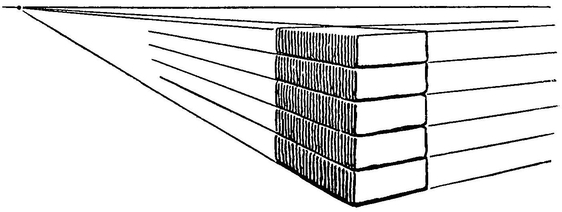
Add more bricks.
As they approach the level of your eye the top of the upper brick appears narrow because the lines determining that surface are coming closer together.

When the pile reaches your eye level the top of the brick can’t be seen at all because the lines of the two parallel edges have come together.

Now pile the bricks higher than your eye-level.
The edges tilt downward in order to reach the vanishing point.
This is true no matter how high we pile them.
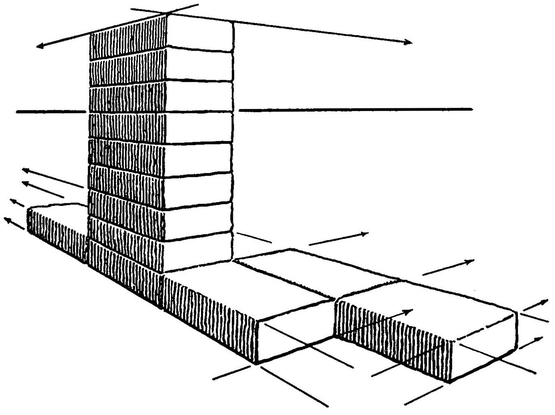
Lay several more bricks on the table, end to end or side against side.
The new lines formed by the additional bricks all extend to the same vanishing points.
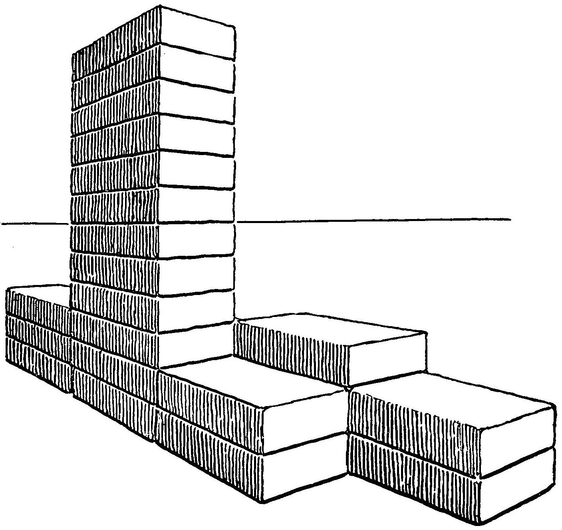
Place more bricks on top of the ones you already have.
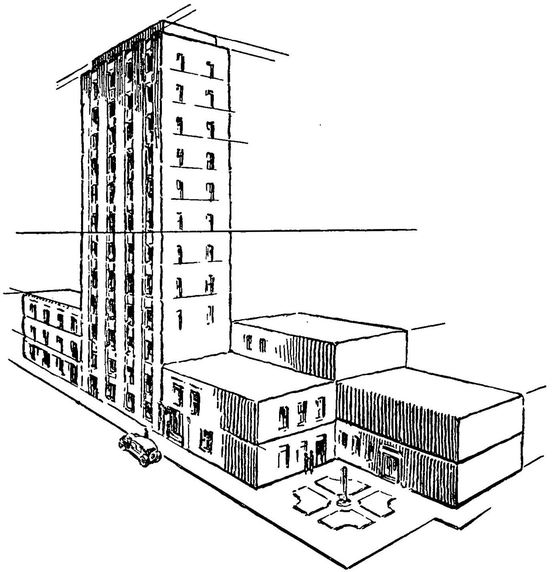
We now have a group of buildings drawn in perspective.
A CITY IN PERSPECTIVE
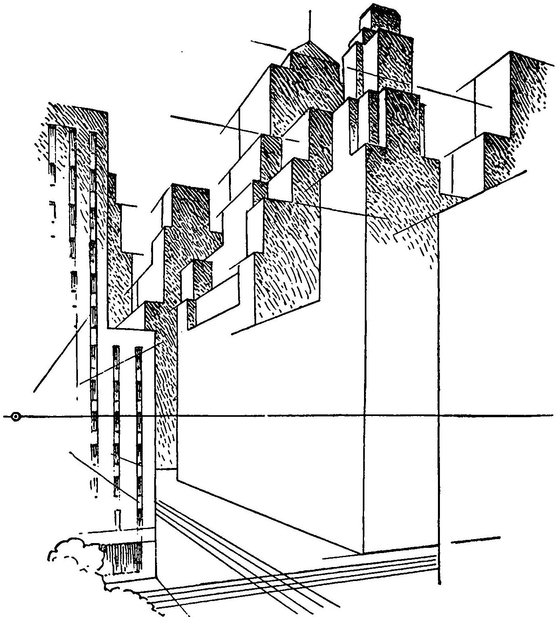
Bricks or blocks are arranged end to end and side against side. Now add more at the top, building the piles to various heights.
A city can thus be drawn by the use of two perspective points on a line of vision.
When you sketch a city from the window of a high office building, keep in mind that the buildings you see are nothing more than bricks piled up in the manner just explained.
CHANGING THE EYE-LEVEL
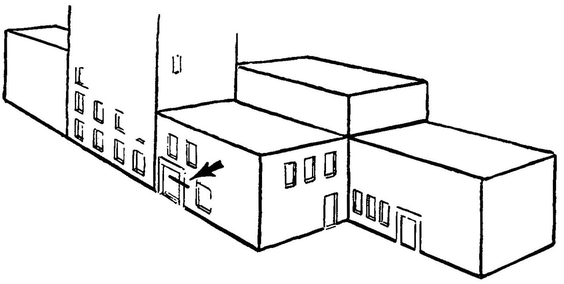
We now wish to draw the same grouping as we should see it from the street level.
First, decide how high a person’s eye-level would be if he were standing beside one of the buildings.
The height of his eyes would be about where the mark is on the door.
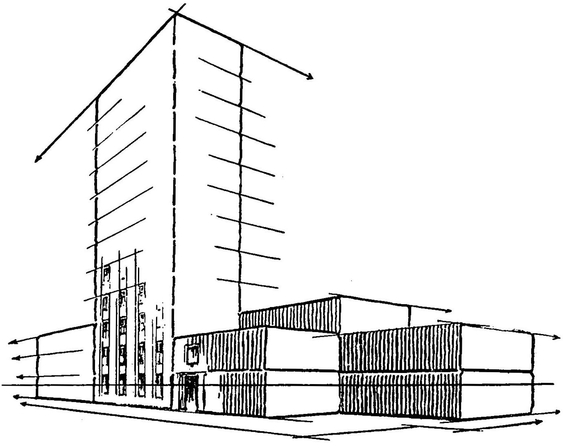
Now we redraw the buildings, lowering the eye-level so that it passes through the mark on the door. The vanishing points remain on the line in their same relative position as before. The upright lines of the buildings are in the same position. Only the horizontal lines change for this change of eye-level.
Different views of the buildings may be drawn in this manner by raising or lowering the eye-level.
REMEMBER
All parallel lines in a perspective drawing meet at one point regardless of how many lines there are or how high they may be from the ground.
All horizontal lines merge into the eye-level line when they reach the eye-level.
Parallel lines that are below the eye-level tilt upward; when above the eye-level they tilt downward toward the vanishing point.
A building can be considered as a stack of bricks.
Whoever can draw bricks can draw a city.
PROBLEMS
Place books in a stack on your desk so that the top edge of the top book reaches your eye-level. Make a sketch.
Now stand up and sketch the same group.
Place the books on something that is above the eye-level and sketch them.
Compare the three drawings.
Make a drawing of some building that you can see from your window. Draw it as if it were bricks.
Now draw a whole group of buildings in this manner.